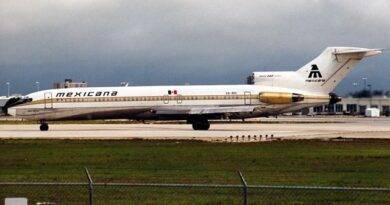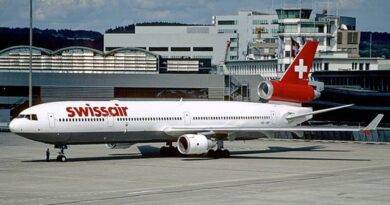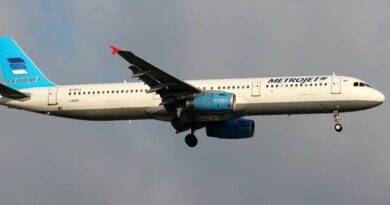Korean Airlines Flight 007: The Shootdown
There is no doubt that the political atmosphere around the globe was very tense and undelightful during the Cold War. Many unfortunate and galling events took place during this era in every area. People were forced to live under unacceptable conditions, the world parted into two pieces, and the tension between the nuclear authorities peaked. During such an era, surely, many innocent people also suffered. And Korean Airlines Flight 007, an unforgivable blot in the history of aviation is one of the events for such. Today, we will look into the events that took place in the shootdown of the Boeing 747 that belonged to Korean Airlines on September 1st, 1983.
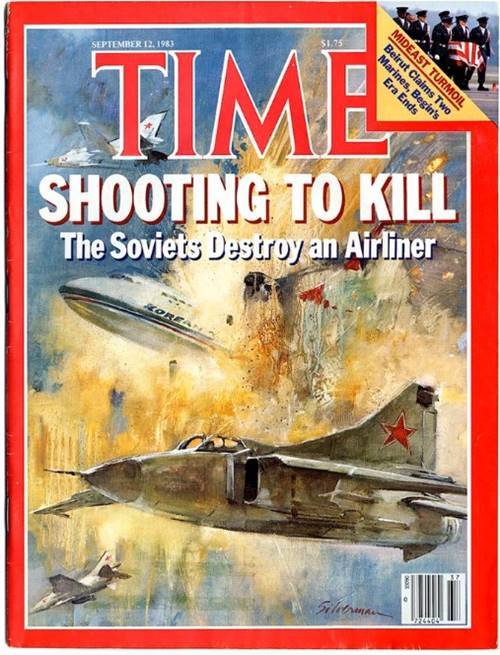
The Unfortunate Event That Took 269 Lives
On 1 September 1983, a Boeing 747 that belonged to Korean Airlines was scheduled to take off from New York, and arrive at Seoul via Anchorage, Alaska. The flight was planned to set out at 00:25 EDT from John F. Kennedy International Airport. The first captain of the flight was Captain Chun Byung-in at the age of 45, the first flight officer was Son Dong-hui at the age of 47, and the flight officer was Kim Eui-dong (age unknown). The flight was decently booked, with about 80 empty seats in total.
After the plane took off from John F. Kennedy Airport at 00:25 EDT, it landed at Anchorage, Alaska for refueling. The plane uneventfully took off from Anchorage, and started ascending on its assigned route. The assigned route for the Korean Airlines’ Boeing 747 was known as R-20 (Romeo Two Zero), and it was ranging only 17.5 miles (28.16 km) from what was then the Soviet Air Space near Kamchatka Peninsula.
The R-20 route had a total of 10 waypoints that airplanes could use for navigation and make sure that they are on the right route. The coordinates of these waypoints were also used for auto-pilot to set optimum courses between waypoints in INS mode.
All modern aircrafts have multiple auto-pilot navigation systems, which determines by what parameters the autopilot will determine its course. The Boeing 747 that belonged to Korean Airlines had four different auto-pilot modes, each of which worked with a different principle. The captain of the flight 007 enabled HEADING mode during the take-off, which basically meant that the auto-pilot was going to follow a magnetic course set by the pilot. However, this mode was not very suitable for certain situations, since the rate of accuracy is lower in some cases when compared to INS.
The captain was supposed to switch from HEADING to INS once the take-off was complete and the aircraft had reached the cruising altitude, but when the airplane is already more than 7.5 miles away from set INS waypoints, the auto-pilot automatically decides that it needs to follow the set HEADING route. And this was simply what happened with the Korean Airlines Flight 007’s Boeing 747.
The airplane had deviated from its set INS route once it was already 7.5 miles away from the set route, and continued with the set HEADING route, which was as far as over 10 miles in some areas.
28 minutes after take-off, about 175 miles (282 km) west of Anchorage, the airplane was cruising about 5.6 miles (9 km) away from the optimal INS course.
50 minutes after the take-off, when the airplane didn’t check at one of the waypoints of the R-20 route at Bethel, a military radar in Alaska detected that KAL 007 was 12.6 nautical miles (23.3 km) North of where it should have been.
The long distance between the supposed waypoint and the airplane had obscured the VHF (a short range/low latency radio technology) waves to reach to the ground control. However, the King Salmon radar at Alaska was able to track the airplane in real time and determine that it was too far away from the waypoint. For this reason, the ground control requested another KAL flight which was also en route to Seoul (KAL Flight 015) to relay reports to air traffic on KAL 007’s behalf.
At 15:51 UTC, KAL 007 entered the restricted air space owned by the Soviet Union. Shortly after, a Soviet Sukhoi Su-15 interceptor was sent to follow and -if necessary- shoot the Boeing 747. However, this “necessity” situation was overseen by the responsible authorities, and the shootdown was confirmed by them.
The Sukhoi Su-15 shot KAL 007’s Boeing 747 inside restricted Soviet-owned airspace, and a total of 269 innocent people were killed, both due to the flight crew’s carelessness and the malfunctioning Soviet hierarchy system.
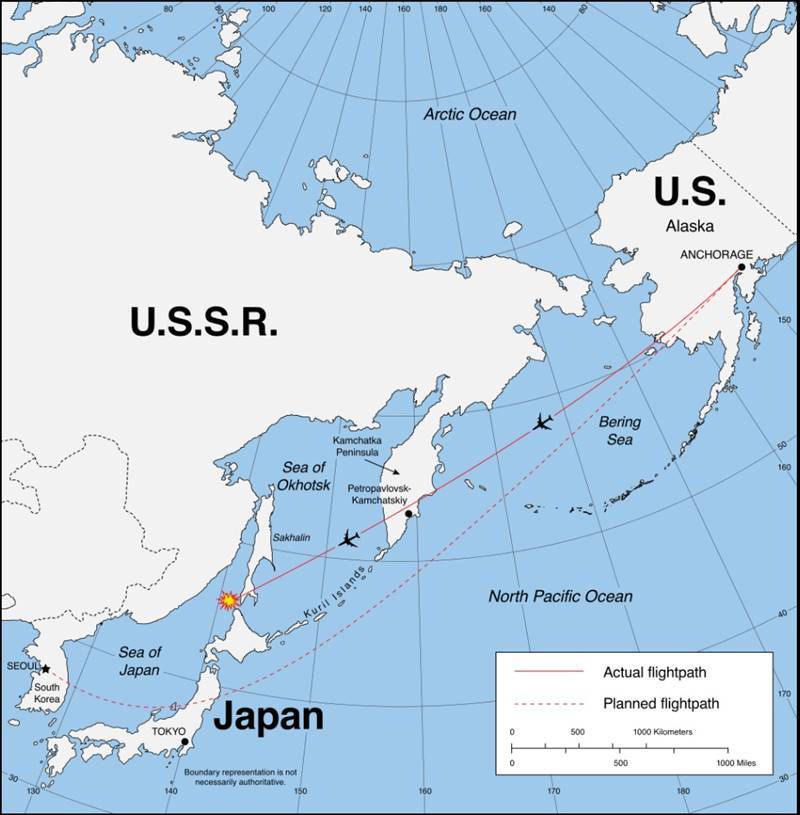
source: By Mgarin73 – Own work based onFileKA_Flight_007.gif, CC BY 3.0, httpscommons.wikimedia.orgwindex.phpcurid=12663315
Sources
https://en.wikipedia.org/wiki/Korean_Air_Lines_Flight_007
https://www.britannica.com/event/Korean-Air-Lines-flight-007
